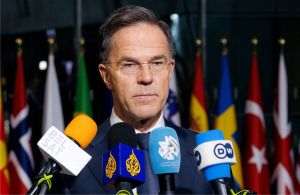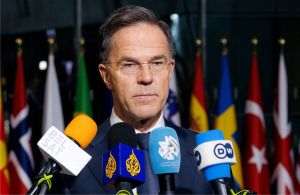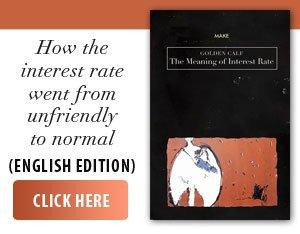The Geneva talks for a peace agreement have temporarily stopped, just after Donald Trump and Marco Rubio announced in the American media that some concessions had been made, and what's more, the Secretary of State claimed that the November 28 deadline could be exceeded, as long as the Ukrainian side is open to dialogue on finding a solution that satisfies both parties.
After everything that has happened in recent days, it can be said that, although the Americans came to Geneva confident, with a plan that, from the documents that were published in the American press, practically meant a capitulation of Ukraine to the aggressor, that is, the Russian Federation, Donald Trump's representatives found that Europe is more united than ever, that it has come up with a counterproposal and that it is ready to support the authorities in Kiev so that they can obtain equal treatment with the Kremlin at the negotiating table.
After talks with the Ukrainian side, US Secretary of State Marco Rubio spoke of "substantial progress" and "the best day" of the entire process, a tone echoed by the White House, which insists that the 28-point plan "remains the basis" of a possible agreement. Ukrainian President Volodymyr Zelenskiy confirmed, in his messages, that there are "signs" that Trump's team is starting to listen to Kiev's arguments, but stressed that the moment is critical and that no step can weaken the country after almost four years of war.
Behind this controlled optimism, the real stakes are huge: in Geneva, the US pressured the Ukrainian side to accept, in an "adjusted” form, the Trump plan, which requires Kiev to cede territory, reduce its army to 600,000 soldiers in peacetime, renounce through the Constitution the ambition of joining NATO and accept the freezing of borders depending on Russian gains on the ground, including the recognition of Crimea, Donetsk and Luhansk as de facto Russian territories. Moreover, the initial text placed severe limitations on the use of frozen Russian assets, directing tens of billions of dollars to mechanisms largely controlled by Washington, with substantial profits for the United States, in exchange for security guarantees for Ukraine.
• Europe remains on Ukraine's side
This is the context in which Europe decided to move away from the "we take note” logic and assume a role as co-author of peace. Britain, Germany and France have submitted a detailed counterproposal, built point by point on the skeleton of the American plan, but rewritten in key areas: security, territories, NATO and the use of Russian assets. The document, consulted by Reuters and taken up by the European and Romanian press, begins by reaffirming Ukraine's sovereignty and calls for a global non-aggression agreement between Russia, Ukraine and NATO, intended to close the security ambiguities accumulated over the last 30 years.
The most spectacular change concerns the Ukrainian army: while the American plan imposes a limit of 600,000 soldiers, the European plan proposes a ceiling of 800,000 in peacetime, implicitly recognizing that a country that has been attacked on a large scale by Russia cannot be pushed into structural vulnerability just to neatly close a diplomatic document.
In the same spirit, the Europeans refuse to turn NATO into an instrument to permanently block Ukraine: their text says that Ukraine's accession will depend on the internal consensus of the Alliance "which does not currently exist”, thus keeping the door open, but without introducing a formal veto in the agreement. Another red line that Europe is crossing with its pen is the idea that NATO will never have soldiers in Ukraine. The European counter-proposal only accepts the ban on the permanent stationing of troops under NATO command in peacetime, which leaves room for flexible forms of presence and training, without turning the country into a security gray zone.
In addition, the European plan provides for a bilateral security guarantee from the US, "mirroring” NATO's Article 5: a Russian attack on Ukraine would trigger a coordinated military response and the automatic reimposition of all global sanctions, while a possible Ukrainian offensive on Russian territory would lead to the loss of the guarantee.
• Territories in eastern Ukraine - the bone of contention in peace negotiations
The territories of eastern Ukraine remain the hottest core of the two peace plans. The American plan, in its original form, requires Ukraine not only to give up the territories already occupied by Russia, but also to accept the loss of areas that Moscow does not even control on the ground, thus freezing the border in favor of the Kremlin. The European counterproposal reverses the logic: negotiations on territorial exchanges must start from the line of contact, that is, from the real front, and Kiev only commits not to recover the occupied territory by military means, not to give it up legally. It is a painful but essential compromise: Europe accepts that the war cannot continue endlessly, but refuses to enshrine, by agreement, a "Putin map” of Ukraine.
Even more explosive is the section on Russia. The European plan goes much further than the usual discussions about sanctions: it explicitly talks about the gradual reintegration of Russia into the global economy, the gradual lifting of restrictions and even about Moscow's readmission to the G8, once the agreement is implemented, compensation is paid, and the policy of non-aggression towards Ukraine and Europe is legislatively enshrined in Moscow.
For Western societies, this point is already politically flammable: some European leaders reject the idea of returning to "business as usual” with Vladimir Putin, while others implicitly admit that without a controlled reintegration of Russia, the continent remains locked in a permanent cold conflict.
On the economic dimension, the fault line between Washington and the European proposal is equally clear. The Americans have proposed that a substantial part of the frozen Russian assets be used in a US-led mechanism, with part of the profits going directly to the US budget, while the rest would be channeled into a joint US-Russian fund. The Europeans are openly opposed: they demand that Russian sovereign assets remain frozen until the full payment of compensation to Ukraine is made and that they be used primarily for the reconstruction of the country, not for bilateral financial engineering between Washington and Moscow.
Following the emergence of the European peace plan, the Russian media accused the European Union of "sabotaging” the peace negotiations, that the plan was "unacceptable to Moscow”, and that it was made precisely for this purpose, in order to blame Russia in case of failure of the negotiations.
On the other hand, part of the European public opinion sees Trump's initial version as a "new Molotov-Ribbentrop Pact”, a territorial swap over Kiev's head, while former Western officials point out that such an agreement would turn Ukraine into a perfect target for a future Russian invasion.
In the United States, too, Trump's plan for Ukraine is not accepted without question. A bipartisan group of senators has warned that the text, in its original form, risks giving in too much to the Kremlin, while advisers close to Trump are trying to refute accusations that the document was directly influenced by Moscow, after independent analysts noted wording and transliterations that appear to have been taken from Russian documents. Marco Rubio insisted that the plan is "designed in the USA” based on contributions from both sides, but admitted that many points remain open and that the text is already undergoing changes under pressure from Ukrainians and Europeans.
Kiev, for its part, has begun to publicly draw its own "red lines.” The speaker of the Kiev parliament, Ruslan Stefanchuk, has listed non-negotiable principles: no recognition of the occupied territories as "Russian right,” no limits on Ukraine's defense capabilities, no veto on the country's right to choose future alliances. Volodymyr Zelensky has conveyed the same message, in a more diplomatic form: Ukraine seeks compromises that will strengthen it, not weaken it, and the use of Russian assets for reconstruction is, for him, an essential condition for any real peace agreement.
At this point, the picture is clear: the Trump administration is pushing forward with a 28-point plan that, even "adjusted,” is based on the idea of cession of territories and harsh limitations on Ukraine's military power, in exchange for American security guarantees and the promise of a quick peace. Europe responded with a counter-plan that tries to correct structural imbalances: it keeps the Ukrainian army stronger, moves territorial negotiations to the front line, keeps Russian assets frozen until reparations are paid, accepts in the future the controlled reintegration of Russia into the global economy and even into the G8, but only after the aggressor pays and assumes legislatively the renunciation of violence.
Washington wants a quick agreement that closes the file before the war becomes an internal political disaster. Europe wants a peace that does not enshrine, in the long term, the doctrine of "force creates borders". Ukraine wants a peace that is not synonymous with capitulation. Russia wants a peace that legitimizes its conquests and restores its lost status.
Between these four agendas, the peace plan for Ukraine is being rewritten in real time. And the question that remains, despite all the optimistic statements, is simple and brutal: does what is being negotiated represent the end of the war or just the beginning of a new order in which Ukraine pays the bill for the compromise between the great powers?























































